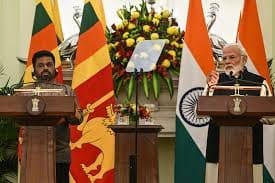
India and Sri Lanka are gearing up to sign their first-ever formal defense cooperation agreement on April 5, 2025, during Prime Minister Narendra Modi’s visit to Colombo, a move that’s raising eyebrows in Beijing and shifting the balance of power in the Indian Ocean Region. This pact, building on Sri Lankan President Anura Kumara Dissanayake’s assurances during his earlier visit to India that Sri Lanka won’t let its territory threaten India’s security, includes joint military exercises, training programs, and equipment support—marking a significant upgrade from their historically cautious security ties, which haven’t seen such a formal framework since India’s controversial IPKF deployment in the 1980s. The deal is a clear counter to China’s expanding influence, particularly through its Belt and Road projects like the Hambantota Port, which India fears could become a military foothold for Beijing. Meanwhile, China’s cozying up to Bangladesh’s interim leader Muhammad Yunus, who met Xi Jinping on March 28, 2025, in Beijing, shows Xi’s intent to bolster ties with Dhaka—signing nine agreements and pledging investment to offset India’s regional clout. Yunus, facing a shaky economy and frosty ties with India, is leaning on China for support, while India and the U.S. are doubling down on the Bangladesh Army as a reliable partner, especially after reports of India thwarting a coup attempt against its leadership. The army, with its deep ties to India through exercises like Bongosagar and officer training, remains a key player amid rumors of internal dissent and Yunus’s uncertain grip on power. This intricate dance—India and Sri Lanka tightening their defense bond, China backing Yunus, and India and the U.S. banking on the Bangladesh Army—underscores a high-stakes rivalry for influence in South Asia, with the Indian Ocean as the chessboard.





